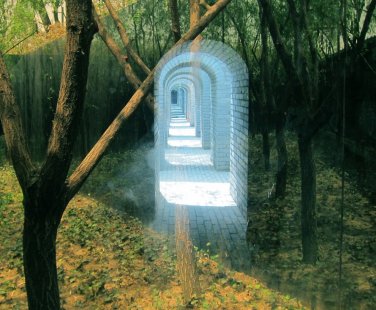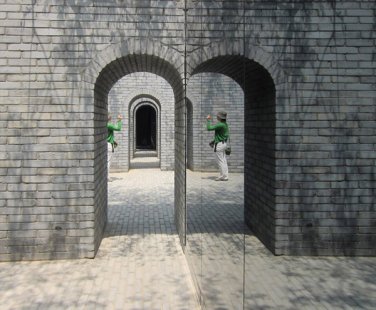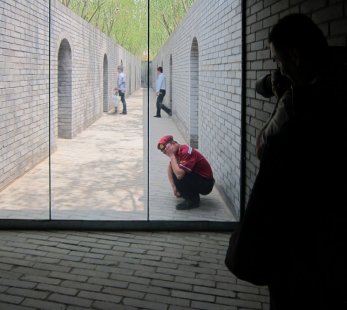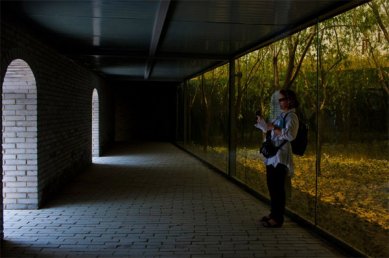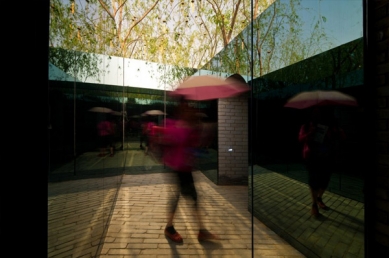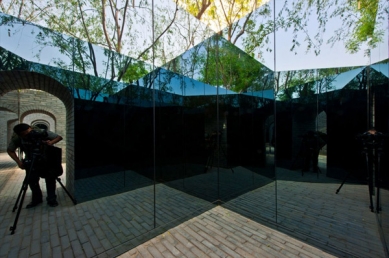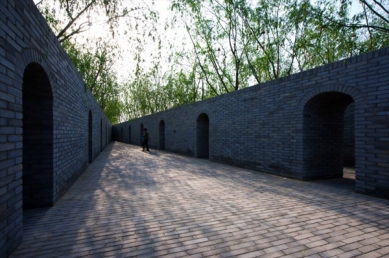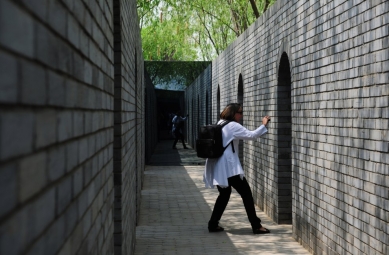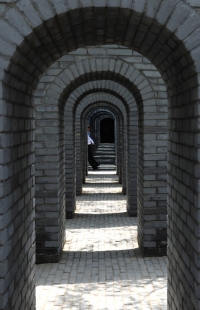
Endless City
Master Designer's Garden Plot 6

Martha Schwartz is a kind of anti-landscape architect: friends with fellow subversive Will Alsop, she made waves in the UK recently when she argued that Britain’s “obsession” with gardens was detrimental to the country’s public parks, which suffer from a lack of upkeep and funding. Schwartz’s argument hints at her belief in parks as activators of public space, of democratic congregation, and of green space as an essential puzzle piece in our greater move towards social and environmental sustainability.
Wrote Schwartz in a recent BBC piece, “When it comes to environmental concerns, there has been altogether too much fragmented talk of buildings. We have consistently failed to recognize that buildings are situated in wider landscapes that desperately need greater attention.” Schwartz’s approach to this lack of action has been multi-disciplinary: her work can often more easily be labeled as “art commission,” “park,” or “reclamation,” rather than the standard “landscape architecture.”
Commissioned to create the landscape architect garden at the upcoming International Horticultural Exhibition in Xi’an, her Cambridge-based office designed what some will surely call an art installation: the spaces are laid out not necessarily to showcase horticulture, but to curate a set of movements and views. And the act of leading a crowd through a public space, inevitably, is embedded with some implicit political value.
The theme of Xi’an International Horticultural Exhibition 2011 (“Green Leads the Trend”) is “Harmonious Coexistence Of City And Nature.” Obviously, the theme is meant to promote the idea of sustainability, a pressing issue in a country that’s exponentially increasing its rate of industrialization, and thus, pollution.
The monolithic grey walls and sharp, angled perspectives ― as well as the mirrored glass and ambiguity of visibility ― speak a language that’s far more political than the exhibition may have intended. One interpretation is a reference to the impenetrability of the Chinese government, and the silence of activists like Ai Weiwei lost within its maze of closed doors and thick walls.
Wrote Schwartz in a recent BBC piece, “When it comes to environmental concerns, there has been altogether too much fragmented talk of buildings. We have consistently failed to recognize that buildings are situated in wider landscapes that desperately need greater attention.” Schwartz’s approach to this lack of action has been multi-disciplinary: her work can often more easily be labeled as “art commission,” “park,” or “reclamation,” rather than the standard “landscape architecture.”
Commissioned to create the landscape architect garden at the upcoming International Horticultural Exhibition in Xi’an, her Cambridge-based office designed what some will surely call an art installation: the spaces are laid out not necessarily to showcase horticulture, but to curate a set of movements and views. And the act of leading a crowd through a public space, inevitably, is embedded with some implicit political value.
The theme of Xi’an International Horticultural Exhibition 2011 (“Green Leads the Trend”) is “Harmonious Coexistence Of City And Nature.” Obviously, the theme is meant to promote the idea of sustainability, a pressing issue in a country that’s exponentially increasing its rate of industrialization, and thus, pollution.
The monolithic grey walls and sharp, angled perspectives ― as well as the mirrored glass and ambiguity of visibility ― speak a language that’s far more political than the exhibition may have intended. One interpretation is a reference to the impenetrability of the Chinese government, and the silence of activists like Ai Weiwei lost within its maze of closed doors and thick walls.
0 comments
add comment


